The sleepy village of Hillsville, Pennsylvania, blossomed in the early 1890’s when Italian and other European immigrants began flooding into the area to work in the numerous limestone quarries. Many of these immigrants were from the region of Calabria in southern Italy, an area where limestone quarries were also in abundance. The Italian community in the vicinity of Hillsville, as was typical, featured tight-knit families with strong Catholic values. Of the almost 1,500 people residing in Hillsville in the early 1900’s, about 900 of them were Italians. The majority of the Italians were honest and hard-working laborers, but a handful of them were formerly associated with crime syndicates in southern Italy.
Before too long the Italian community in Hillsville, and those in the neighboring locales of Bessemer and Carbon, came under the control of a group of feared Italian enforcers generally known as “The Society.” The Society exercised great influence and essentially ran all aspects of the Italian community. They acted as a liaison with the quarry owners, headed up the religious councils, controlled alcohol and retail sales, regulated all forms of criminal activity, and settled disputes within the community. All working Italian men were expected to pay “dues” in exchange for protection.
When met with resistance the Society’s main weapon was to extort money. One of their favorite forms of extortion was known as the “Black Hand,” sending a letter – usually signed with a dagger, a black hand print, or another sinister symbol – threatening the recipient to bring money to a drop off location or face violent reprisals. It was this form of extortion that led the press to eventually dub these Italian crime syndicates, which operated in most Italian communities across the country, as the “Black Hand” or “Black Hand Society.” Most of the poor Italian immigrants complied as most spoke no English, wanted to avoid trouble, and were unaware of how to seek outside assistance. Many workers simply left the area and this trend worried the quarry owners.
In 1905 the Black Hand Society in Hillsville was led by forty-year-old Rocco Racco, who hailed from the town of Grotteria in southern Italy. Racco, who spoke decent English, had been in the country for almost two decades and had resided in Hillsville for about six years. Racco owned and operated a general store with his wife Maria and the Italians under his protection were all expected to shop there.
A strike by quarry workers in late 1905 and other factors led to a violent power struggle within the Black Hand Society in Hillsville. Two of Racco’s rivals, Ferdinando “Fred” Surace and Giuseppe “Joe” Bagnato, banded together and basically forced Racco out of power by the spring of 1906. Surace became the new leader of the group, but violence prevailed throughout the remainder of the summer.
Add to the mix a tense rivalry involving landowners, the Pennsylvania Game Commission, and Italian immigrants. With the influx of immigrants in the late 1800’s many longstanding landowners in Pennsylvania grew to resent foreigners, who often trespassed on their lands while hunting birds and other game. Tensions were volatile and as a result the Pennsylvania Game Commission was founded in 1895 to begin overseeing the conservation and management of wildlife. It wasn’t long before the Game Commission began targeting Italian immigrants as the main violators of state game laws. The poor Italians, surviving on a minimum wage, could afford neither the license fees nor the stiff fines. Landowners were pleased, but Italians generally grew to hate the Fish and Game Wardens.
L.S. “Seeley” Houk, the Fish and Game Warden for Lawrence County, yielded considerable power while aggressively enforcing the state game laws. Seeley Houk – also given as Seely and Sealey – was a mean and fearless man who was not afraid to boldly challenge poachers and other violators. He was known for his mistreatment of foreigners and a handful of complaints were lodged against him. In August 1905 he was convicted of assaulting an Italian, but the sentencing was delayed until late March 1906.
In February 1906 a determined Houk, who continued in his duties, encountered an Italian who he believed was illegally hunting near Hillsville. A dispute arose and Houk shot the man’s dog. The hunter escaped and fled back to Hillsville. Unfortunately for Houk, it turned out that the animal was Rocco Racco’s prized hunting dog.
Not long after, on Friday, March 2, 1906, Houk disappeared during a regular inspection trip to Hillsville. Speculation was that he fled to avoid being heavily fined or even sent to jail in his upcoming sentencing trial. An investigation by local authorities turned up nothing and his whereabouts remained a mystery. An arrest warrant was issued on March 24 after he failed to appear in court for his sentencing hearing.
A month later, on Thursday, April 24, 1906, a Pennsylvania Railroad crew spotted a body floating in the Mahoning River near Hillsville. The crew continued on towards New Castle where they alerted the police. Authorities descended on the scene and before long it was determined that the remains were those of Houk. The body had been carefully weighted down with rocks, but an unusually low tide had revealed its presence. The New Castle News of Friday, April 25, 1906, reported, “An examination of his body by Coroner Cox, Thursday afternoon, and a postmortem held later in the evening, revealed ghastly wounds about his breast and head, indicted by a shotgun in the hands of some unknown person or persons. Blows, probably delivered by a club or a foot, supposedly after the shot had been fired, horribly mutilated the victim’s face and head. The body of the murdered man was almost beyond recognition.”
Local authorities went to work on the case but made little headway. Residents of Hillsville remained tightlipped, and the investigation quickly stalled. A few months later, on the afternoon of Monday, August 13, 1906, eighty-year-old farmer William “Squire” Duff heard someone shooting on his property near Hillsville. He went to investigate and was greeted with a shotgun blast to his face. Duff initially survived but passed away the following morning.
The news of Duff’s murder quickly spread and public outrage ensued. On Wednesday, August 15, 1906, the New Castle News reported, “One of the most wanton of the long list of murders that has disgraced this county was perpetrated when ‘Squire William Duff of Mahoning township, one of the oldest and most respected residents of the county, was mortally wounded in the most unwarranted manner.” A funeral was held in Hillsville on Thursday, August 16, and Duff was laid to rest in the Hillsville Cemetery.
Italians in Hillsville, unlike their response to the Houk murder, began to talk freely about the Duff case. Two Italians, Joseph Calauti (or Calaute) and Dominic Sainato, were quickly identified as suspects with Calauti believed to have been the shooter. A manhunt got underway to locate Calauti, but the New Castle News of Wednesday, August 22, 1906, reported, “All efforts to locate him have failed. Posse’s have scoured the country in the vicinity of the murder and for miles around, but in vain. Calacti is missing as though the earth had opened and swallowed him.”
Local authorities and the limestone quarry owners banded together and soon hired the Pinkerton Detective Agency to assist in the crusade against the Black Hand Society. Pinkerton agents began using informants to develop leads in the murders of Houk and Duff, but also of Black Hand activities in general. A handful of undercover agents of Italian descent moved into Hillsville and began working in the limestone quarries. One Pinkerton man, known as Operative #89, even managed to infiltrate the leadership of the Black Hand Society.
Meanwhile, Rocco Racco was charged and convicted of minor theft in September 1906. While out on bail pending formal sentencing he skipped town. Racco was captured by County Detective J. Lee McFate in New York City two weeks later and was returned to New Castle. He was sentenced to fifteen months confinement and sent to the Western Penitentiary in Pittsburgh. The investigation against the Black Hand Society continued in earnest.
In January 1907 a new crop of county officials assumed office, including District Attorney Charles H. Young, County Detective Creighton G. Logan, and County Sheriff John W. Waddington. These men picked up and case and finally, in the summer of 1907, authorities were ready to strike. On Saturday, July 13, 1907, hundreds of Italian quarrymen lined up to get their pay at the train station in Hillsville. Twenty-two of the men were told there was an issue with their pay and to come back into the office to straighten it out. One by one those men were placed in handcuffs and told to keep quiet. Before long a host of lawmen and undercover Pinkerton agents swarmed from hiding and secured the entire area. The twenty-two men were loaded aboard a train and rushed to the county jail in New Castle. The operation was carried out with flawless perfection.
Many other Black Hand members, including those in the upper echelon, may have been tipped off and fled the area. Surace escaped to upstate New York, where he was arrested and returned to New Castle a month later. Bagnato absconded with $11,000 in extortion money and disappeared back to Italy. Salvatore Candito (or Sam Kennedy), who briefly took over command, fled to New York but was captured near Ellwood City a month later. Other suspected members were also arrested in the coming months, and all were prosecuted over the next year or so. Most of the men were convicted, with some receiving sentences of up to ten years in prison.
On Saturday, December 28, 1907, as Racco was released from the Western Penitentiary, police officials from Lawrence County were on hand to arrest him. He was brought back to New Castle to face charges regarding his involvement in the Black Hand Society. The following May, after developing a case and gaining key witnesses, Racco was formally charged with the murder of game warden Seeley Houk.
His murder trial, sensationalized in many newspapers, commenced on Tuesday, September 15, 1908. Racco, represented by attorneys Harry K. Gregory and Archie W. Gardner (and later by Samuel P. Emery), swore his innocence and maintained he was being framed. Among the key witnesses against him were Black Hand members Ferdinando “Fred” Surace, his main rival, and Dominic Sainato, recently convicted in the killing of William “Squire” Duff. They both received lighter sentences – Surace received ten years and Sainato received twenty years – as a result of their testimony. Sainato probably avoided the death penalty by testifying against Racco.
The two men testified that Racco had confessed to them about killing Houk. The story goes that Racco and his brother-in-law Jim Murdock (or Vincenzo Murdocci) hid in a wooden area along the Pennsylvania Railroad tracks on the south side of the Mahoning River near Hillsville. They ambushed an unsuspecting Houk, shooting him in the face with a shotgun and then beating him unmercifully. The two assailants fled the area but returned later that same day. They weighted Houk’s body with rocks and tossed the remains into the Mahoning River. The motive for the murder was said to be revenge in response to Houk shooting Racco’s hunting dog, but it was also theorized that Racco – in a battle to retain command of the Black Hand Society – killed the Game Warden to demonstrate his power.
Among those who testified was Italian immigrant Fred Rosena, a fellow inmate at the County Jail who was awaiting his own trial for murder. The New Castle News of Wednesday, September 16, 1908, reported, “A sensational feature of the trial Wednesday morning was the testimony of Fred Rosana (sic), who is in jail for the murder of his brother-in-law. Rosana contradicted the testimony which he had given before Alderman Green. He said there that Racco had threatened Houk’s life but in court claimed Racco said he would kill the man who killed his dog. When asked why he changed his story he said that Racco had threatened to kill him in the county jail for testifying as he had done before the alderman.” Rosena went on trial in December 1908, was sentenced to death, and executed in December 1909.
The testimony concluded on the afternoon of Saturday, September 21, 1908, and the jury took to its deliberations at 3:00pm. It took only two hours for a verdict to be reached. Racco was led back into the courtroom to hear the verdict. The New Castle News of Monday, September 23, 1908, reported, “’Once to be born; once to die’ – Rocco Racco. With the gallows looming up before him and the verdict of the jury, ‘Guilty of murder in the first degree,’ ringing in his ears, Rocco Racco made the above comment on his way back to his gloomy cell.”
Not surprisingly, Racco was convicted of the murder on purely circumstantial evidence. Unfortunately for Racco his brother-in-law Murdock had long since fled to Italy. In March 1909 a hearing was held in New Castle and Racco was sentenced to die by execution. A few months later Pennsylvania Governor Edwin S. Stuart set the execution date as September 23, 1909, but it was soon delayed a month.
Racco’s attorneys filed various appeals, including one with the Supreme Court of Pennsylvania, but all were denied. A review of the facts casts some doubt on whether Racco actually killed Houk. It seems likely that the testimony against him was coerced and fabricated to some degree. A more plausible scenario is that Murdock actually killed Houk, although Racco probably ordered the “hit.”
During the appeals process, Racco awaited his fate while confined in the Lawrence County Jail. A notice was posted in the New Castle News of Friday, October 8, 1909, that read, “Notice is hereby given that Rocco Racco will make application to the Board of Pardons on Oct. 20, next, for a commutation of the sentence of death to one of life imprisonment. S.P. EMERY Attorney for Rocco Racco.” This measure was soon denied as well.
On the morning of Tuesday, October 26, 1909, Racco was led to the gallows in the jail courtyard where about eighty people were assembled to witness the execution. Just about 10:30 am he made a brief statement proclaiming his innocence. Newspapers across the country reported on the event and the Titusville (PA) Herald had this to say, “Without fear and expressing his forgiveness for all the officials, Rocco Racco, a well-known Italian, alleged leader of a black hand organization, and convicted of the murder of Selee Houk, a state Game Warden, a year ago, was hanged in the county jail yard here (New Castle) today. On the gallows, Racco said: Gentlemen, I did not see Selee Houk killed; I did not see anyone kill him and I have no suspicion of any person. I pardon everyone and expect to go to Jesus right now. Good bye.” Racco was blindfolded and then nodded to Sheriff John W. Waddington, who pulled the lever to open the trap door. Racco’s neck was snapped and he was pronounced dead at 10:40am. His remains were reportedly buried in an unmarked grave in the St. Lawrence Cemetery in Hillsville.
In early 1922 the fugitive Jim Murdock was back in the news as he apparently made a re-appearance in Lawrence County. The New Castle News of Thursday, February 15, 1922, reported, “It is possible that, in a very short time, Jim Murdock, wanted here for being an accomplice in the murder of Seely Houk in 1906, may be apprehended and forced to stand trial. Murdock is a relative of the late Mrs. Rosa Deln who was burned to death near Edenburg a few days ago. It was learned that he intended to be at the funeral and a guard was stationed near the church. In some way Murdock learned of the presence of the guard and fled in the middle of the funeral service.”
Two days later the New Castle News printed a statement released by County Detective Jack M. Dunlap, known for his aggressive pursuit of bootleggers during his 1922-1925 term, that read, “No statement was ever been made to any one that an innocent man was hanged for the murder of Seeley Houk. The stories carried in other papers were written from the information made against Jim Murdock in a local alderman’s office. I made the information at the instance of former officials who were interested in the Rocco Racco case. I was informed that Murdock was wanted as an accomplice of Rocco Racco. I have not at any time said that an innocent man was hanged for the murder of Sealey Houk and I have no information that would lead me to be of this opinion.” Jim Murdock apparently evaded capture and was never brought to trial for his involvement in the murder of Seeley Houk.
Many accounts also indicate that Hillsville native Joseph Calauti, believed to be involved in the murder of William Duff, disappeared and was never brought to trial. However, that is not entirely true. Calauti remained elusive for many months but was finally located in December 1907. He was found to be serving an eight-month sentence in the Onondaga County Jail in New York. He had been arrested the month prior for carrying an illegal revolver. In January 1908 he was returned to New Castle and formally charged with the murder of William “Squire” Duff. In June 1908 his charges were dropped and he turned state’s evidence to be the key witness in the trial against Dominic Sainato. Calauti claimed he was present (but unarmed) at the murders of Seeley Houk and William Duff, and his testimony helped convict Sainato. Calauti was released from custody in early July 1908, though lingering doubts about his innocence persisted for many years.
The Black Hand Society in Hillsville was severely crippled by the trials of 1907-1909 as most of its members sent to prison or fled to avoid prosecution. The law-abiding residents of Hillsville were then generally free to live more normal lives. The Black Hand gangs continued their criminal activities in other locales, particularly New York City, and eventually formed what became known as “the Mafia.”
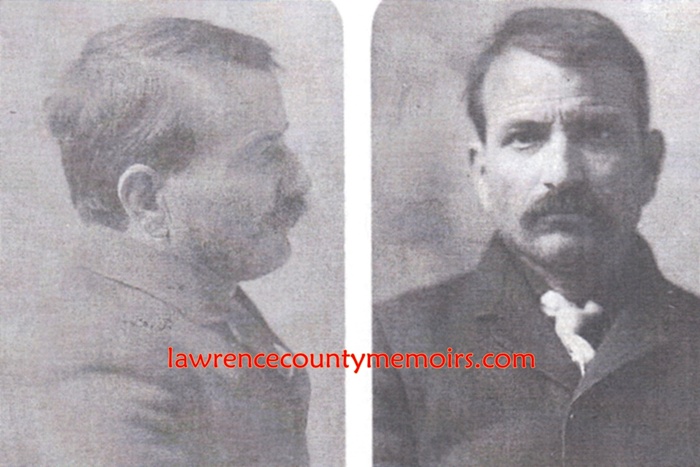 Racco’s sensational trial, which saw him convicted of murder in October 1908, was one of about fifty undertaken in New Castle to crackdown and eliminate Black Hand activities in the region. Racco was hanged to death in New Castle in October 1909. His accomplice Jim Murdock escaped capture and possibly fled to Italy. (1908) Full Size |
 |
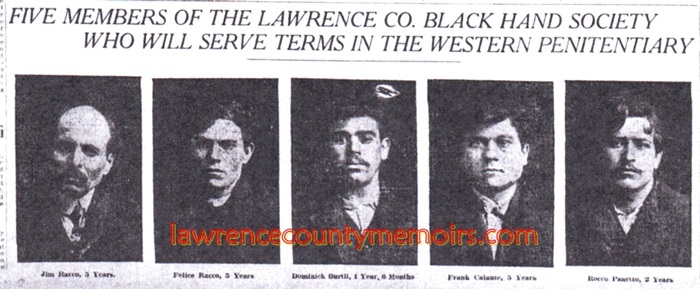 In June 1907 five well-known members of the Black Hand Society were sentenced to prison for various crimes ranging from selling illegal liquor, robbery, conspiracy, and carrying a concealed weapon. Three of these Hillsville men received sentences of five years’ incarceration. (1907) Full Size |
 |
 The death certificate of “Roco Racco,” which lists his cause of death as “Came to his death from hanging by the neck until dead.” (1909) (Courtesy of R. Rangel)Full Size |
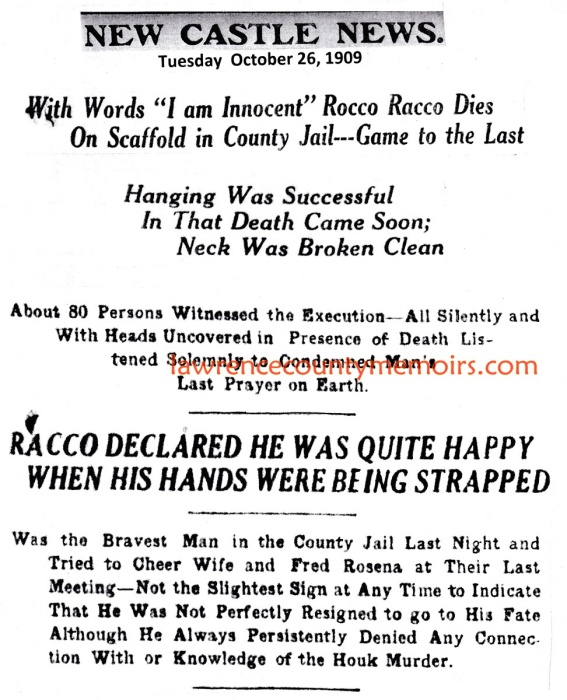 |
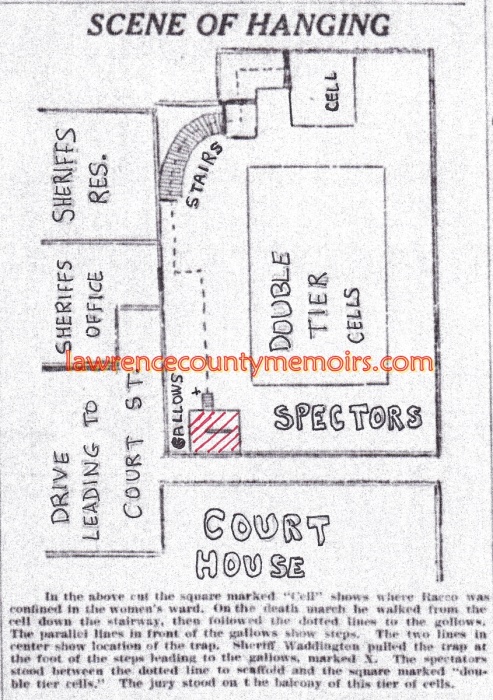 |
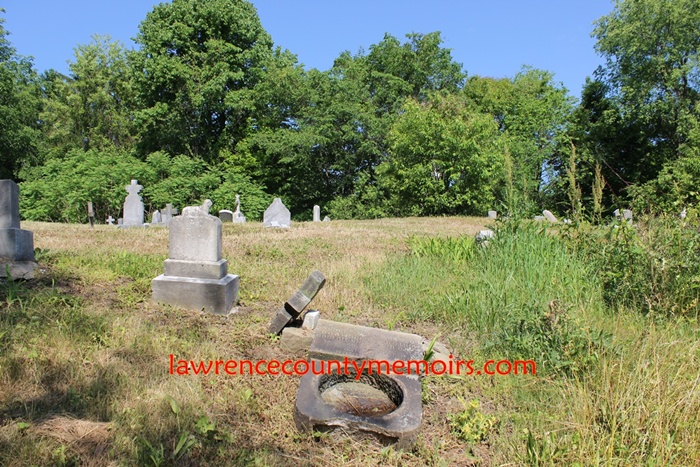 Rocco Racco is buried in an unmarked grave somewhere within the confines of the St. Lawrence Cemetery in Hillsville. (May 2014) Full Size |
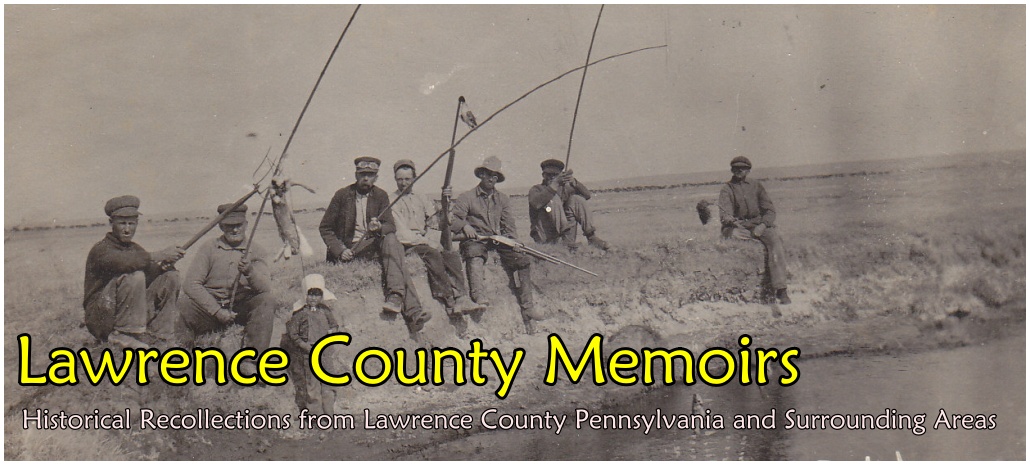



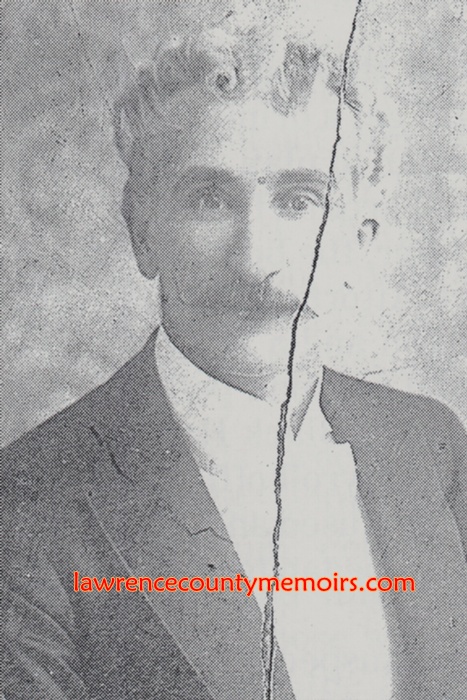
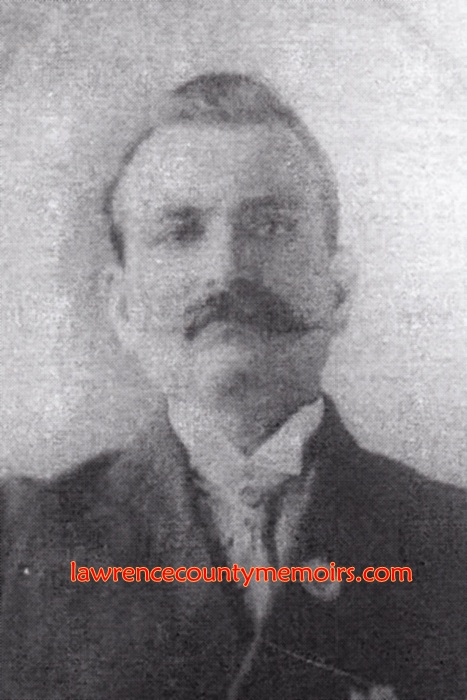

Comments
Al Moran #
Thanks so much for publishing this “History” of the Black Hand in Hillsville. Very intriguing Story.
Brenda Shaley #
I enjoy reading about our history!
Elaine glorioso FALLAT #
My grandfather Joseph Carmen glorioso used to talk abpu t the black hands to me. Really interesting
Brian rowe #
Wow! A lot of names pop up here that still live in the Bessemer/Hillsville/Mt. Jackson area. Jim Houk was a Fish Commissioner when i was a kid living just outside of Bessemer. One of my childhood friends, Mike Sainato and of course one of our current State Reps = Chris Sainato. Emery = my Grandparents were good friends with some Emery’s and my father and aunts grew up with some Emery’s. I wonder if any of these folks are descendants of the folks in this story.
Lee #
Being from Beaver Falls I heard a lot of stories about Koppel , West Pitts. And New Castle, some about Hillsville , the story that sticks in my mind was that the flats near Penn Power in West Pittsburgh was a burial ground for the Black Hand and the Mafia , Don,t know how true that is !!! But I do believe that in Lawrence County there’s. A lot of wanta-be’s that think they are Mafia !!! Quite a joke !!!!
Lee #
Forgot to add “ Great Write-up !!!
M Harmicar Sr. #
Thank you for the Black Hand story. My wife’s family is from New Castle. I enjoy reading your articles,keep up the good work!
mary mangino #
my dad always talked about the black hands also i enjoyed reading the history.
Cathy Blatch Barnhart #
Enjoyed reading about the black handers. My dad told me about them. Have you ever heard of any in New Galilee? Dad said he heard stories when he was young about his Aunt Cora who was suppose to have been married to a black hander. They were found dead along the railroad tracks Dec 8th 1911. The coroner ruled they were killed by a train, but from what I’ve read in the newspaper articles from back then the railroad investigated and thought there was foul play.
Withheld to Protect the Innocent #
What a great bit of research. Congratulations! I grew-up near Bessemer and Hillsville in the fifties & sixties. I moved away decades ago, but my dad and my friends’ dads and uncles back then told us the stories. My one particular friend started to do some investigation of his own, but he got the word to stop. Folks were still living back then—aged—but living, and these folks and their relatives didn’t want to stir-up old animosities, particularly among those with long held grudges & GUNS. AND in those years, when our dads were working in the mills in Youngstown—and everybody grew-up with guys involved in organized crime syndicates—it was best not to talk too much and kept your distance from trouble.
Mark Klockner #
What a GREAT bit of research! Always knew there was a “mob connection” but never knew how it got started.
Franklin Sgaraglino #
I was born in New Castle in 1951. My parents were born and raised in Hillsville and Bessemer respectively.
As an Italian I also heard these stories all my life. My grandfather was a band conductor and was forced to perform at several “Black Hand” events.
Great stories!
Mark J. Kelly, M.D. #
I am doing research on one Michele (aka Michael or Mike) Portolese who had been involved in Black Hand related activities in the Sharon Valley area of Western Pennsylvania and Niagara Falls, New York.
Do you have any information that would be of interest to me?
Thanks, in advance.
Mark J. Kelly, M.D.
Rose Russo #
I am working on genealogy for someone. They say that someone in their family was shot by the Black Hand Gang. Is there anyway I can find a newspaper article?
Thank you
Tracy #
My great-grandparents and their family (my paternal Grandmother) were chased out of Lawrence County by the Black Hand around 1904. I’m told they were tipped-off by the police. Sick that Italians can do that to fellow-Italians.
Gary Conti #
I found a little information on the Mike Portolese.He was called The King of The Blackhand in The Shenango Valley which is Sharon,Sharpsville,Farrell area .He was arrested in Niagara Falls and sentenced to 10 years.
Jim Jackintell #
I just discovered this site
My mother and two sisters were born in Hillsville and were forced to marry Blackhand mobsters as very young teenagers
I have my mother’s diary from that era
Comment